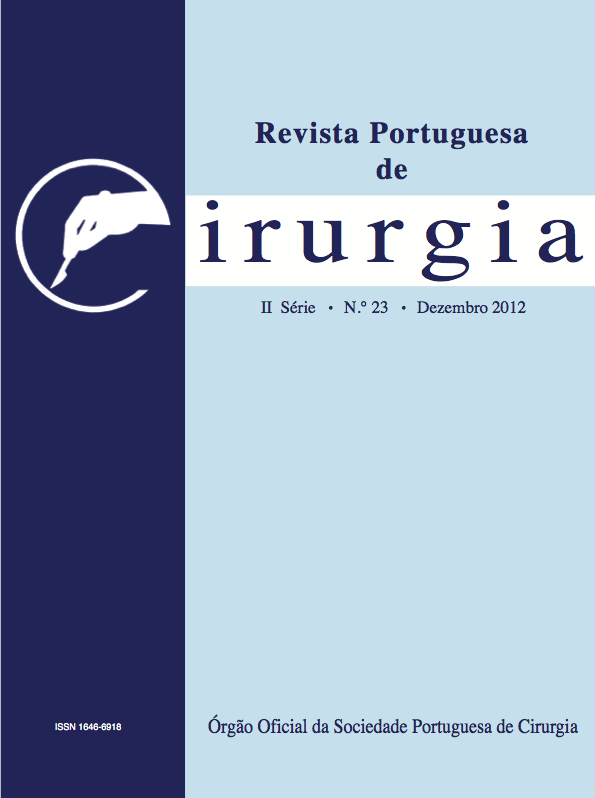Venous Thromboembolism Risk and Prophylaxis in surgical patients
Abstract
Introduction: Venous thromboembolism (VTE) is assumed as a major cause of preventable morbidity and mortality in hospitalized patients, being a major public health problem. Surgery determines a prothrombotic state and there is a need for appropriate thromboprophylaxis according to risk stratification of these patients. Despite good evidence of cost-benefit and created guidelines and risk assessment models, prophylaxis remains underused. It is proposed to stratify risk of VTE in surgical patients, to verify the use of prophylaxis and occurrence of thromboembolic events at 6 months of follow-up.
Material and Methods: During one month, risk was stratified according to the scores prepared by the Vascular Surgery Chapter of the Portuguese Society of Surgery (VSCPSS) and the Caprini score. Use of prophylaxis and occurrence of thromboembolic events were verified at 6 months of follow-up.
Results: This study involved 86 patients with a mean age of approximately 62.60 years. The most common findings of medical or surgical background are varicose veins (28.4%), neoplasia (20.9%), obesity (18.6%) and history of VTE (15.1%). During hospitalization, 22.2% underwent a minor surgery, 44.2% a major surgery and 11.6% a laparoscopic surgery. According to the score of the VCPSGS, 75.6% had high thromboembolic risk. Prophylaxis was prescribed to 77.1% of patients with indication to receive it. According to the Caprini score, 89.6% had high or very high risk and prophylaxis was prescribed to 72.0% of patients that needed it. At 6 months follow-up, there were no thromboembolic events, without statistical significance between degree of risk according to the VSCPSS or the Caprini score or prophylaxis use and occurrence of thromboembolic events (p=1.000, p=o.164, p=0.627, respectively).
Discussion: Most patients had a high risk of venous thromboembolic, being higher when the Caprini score was applied. Prophylaxis was prescribed in most cases, being statistically significance (p=0.0002 and p=0.01) that groups receiving it had higher risk classification. No thromboembolic events were seen at six months follow-up.
Conclusions: Chemoprophylaxis for venous thromboembolism is underused in patients indicated for receiving it. It seems to be an improvement over the use of prophylaxis in surgical patients, compared to that described in Study ENDORSE. However, it remains lower than in other European countries. The CVSPSS is easily applied and can be a tool of choice for risk stratification of venous thromboembolism in surgical services.
Keywords: Venous thromboembolic, prophylaxis, risk assessment, risk factors, surgical patients
Downloads
Downloads
Published
Issue
Section
License
Para permitir ao editor a disseminação do trabalho do(s) autor(es) na sua máxima extensão, o(s) autor(es) deverá(ão) assinar uma Declaração de Cedência dos Direitos de Propriedade (Copyright). O acordo de transferência, (Transfer Agreement), transfere a propriedade do artigo do(s) autor(es) para a Sociedade Portuguesa de Cirurgia.
Se o artigo contiver extractos (incluindo ilustrações) de, ou for baseado no todo ou em parte em outros trabalhos com copyright (incluindo, para evitar dúvidas, material de fontes online ou de intranet), o(s) autor(es) tem(êm) de obter, dos proprietários dos respectivos copyrights, autorização escrita para reprodução desses extractos do(s) artigo(s) em todos os territórios e edições e em todos os meios de expressão e línguas. Todas os formulários de autorização devem ser fornecidos aos editores quando da entrega do artigo.



